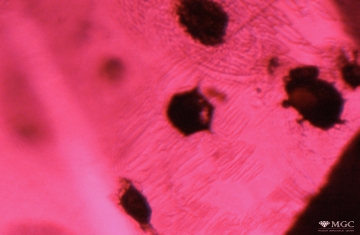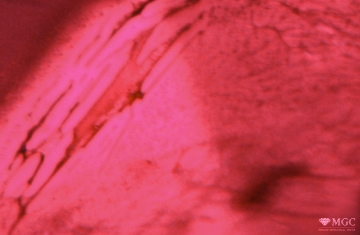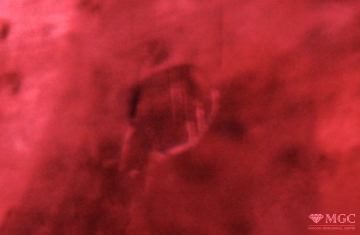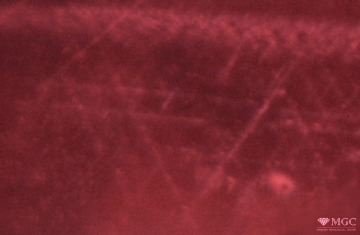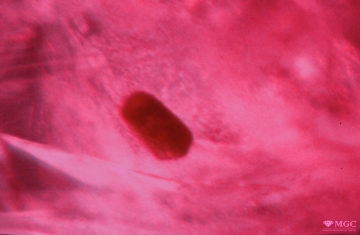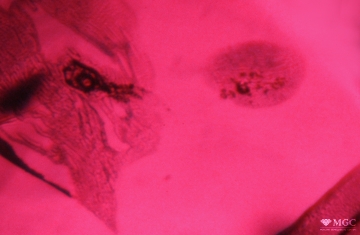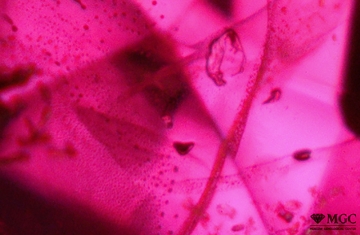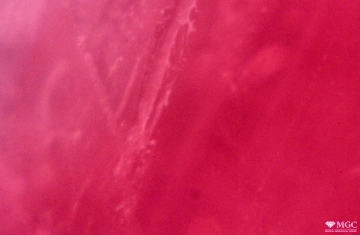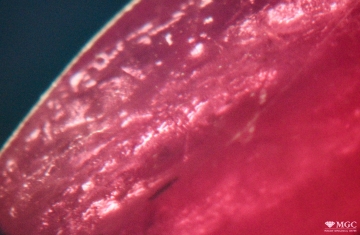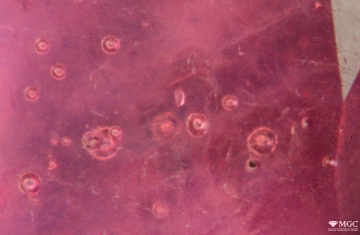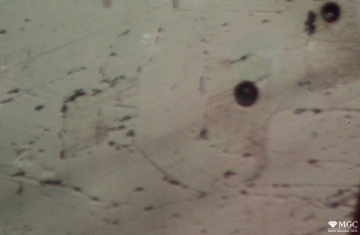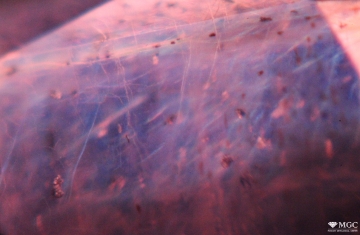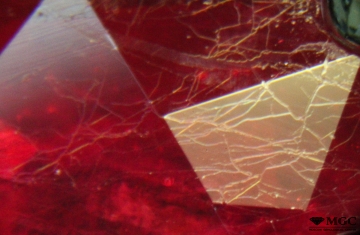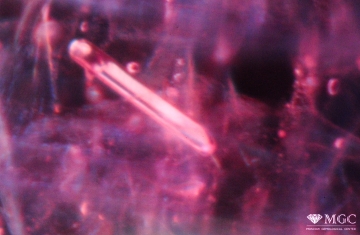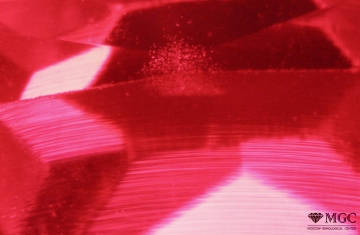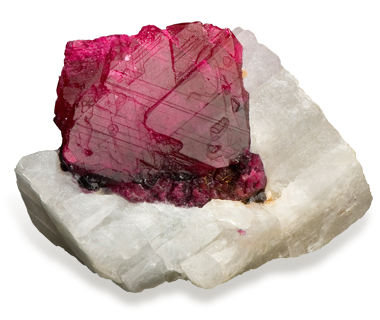open 10 am - 7 pm
laboratory is closed
Ruby
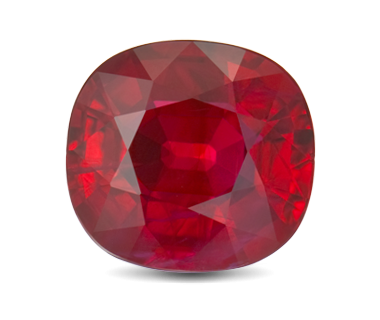
Ruby is a jeweler variety of the mineral corundum (chrome-containing variety), colored in a rich red color with light orange or purple hues or without them. The name comes from the Latin "rubeus" for "red".
Chemistry: Al2O3;
Crystal system: Trigonal, ditrigonal-skalenohedral crystal class (point symmetry group);
Color: Red, red with a weak orange hue, red with a weak or strong purple hue.
The color of a ruby is due to the element chromium (Cr3+).
Identification properties
| Physical properties | |
|---|---|
| Mohs hardness: | 9 |
| Density: | 4.00±0.03 g/cm3 |
| Cleavage: | none |
| Fracture: | conchoidal |
| Optical properties | |
|---|---|
| Optical character: | anisotropic, uniaxial, negative |
| Refractive Index: | ne = 1.760-1.764, no = 1.768-1.772 |
| Birefringence: | 0.008 – 0.009 |
| Pleochroism: | from weak to clear in red hues |
| Dispertion: | 0.018 (BG) |
| Luster: | vitreous |
Inclusions and structural inhomogeneities

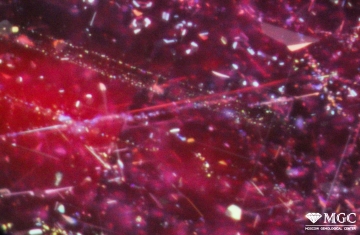
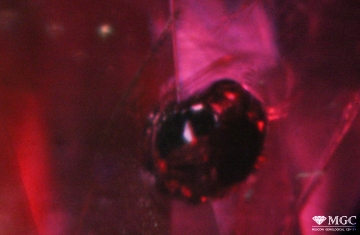
Gem basic treatments
| Treatment | Goal |
|---|---|
| Heat treatment | Removing of purple or orange hue, as well as for rutile microinclusions dissolving that enhances the clarity |
| Heat treatment in a flux mixture | Healing of fractures (cracks) |
| Hydrothermal build-up of the synthetic ruby layer | Altering and improving the apparent clarity and color of gem material |
| Diffusion treatment including the use of beryllium salts | Improving a ruby red color |
| Healing of fractures (cracks) or impregnation with high refractive glasses or colored compositions to fill the open cavities | Altering and improving the apparent clarity and color of gem material |
| Surface coating by applying a various coloring agent | Altering the gem visual color |
Inclusions and structural inhomogeneities
Heat treatment
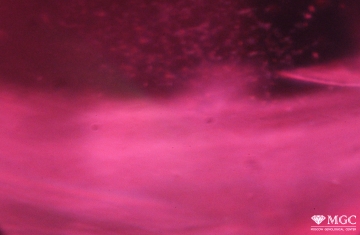
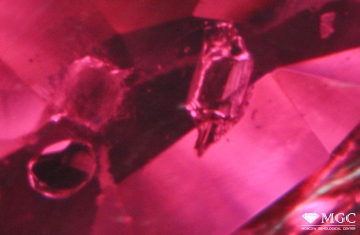
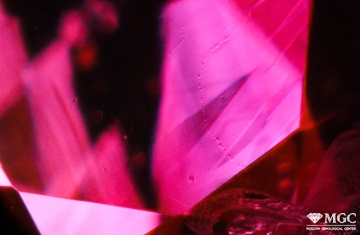
Filling cracks
Synthetic or Imitation gem materials
Synthetic ruby for the jewelry industry is produced by several methods based on different physical principles:
- flame fusion method (Verneuil method);
- "pulling" process from the melt (the Czochralski method, etc.);
- zone melting methods (methods of Bagdasarov, Stockbarger, etc.);
- crystallization methods from a solution in a melt (a group of flux methods)
- crystallization methods from aqueous solution (hydrothermal method group
The most commonly encountered synthetic ruby is as follows:
- corundum colored by filling fractures;
- coated corundum;
- corundum, a layer of synthetic ruby treated;
- diffusion-treated corundum;
- doublet: corundum + glass and corundum + garnet;
- natural and synthetic minerals with a similar color;
- color glass.
Inclusions and structural inhomogeneities
Verneuil Method
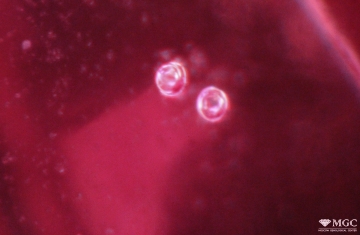
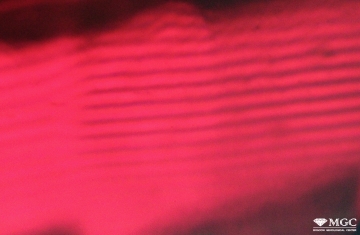
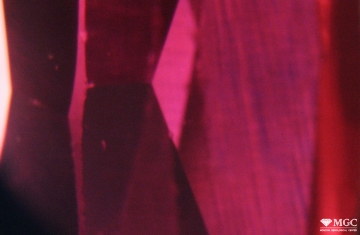
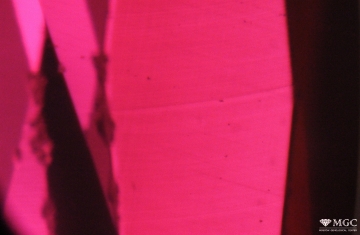
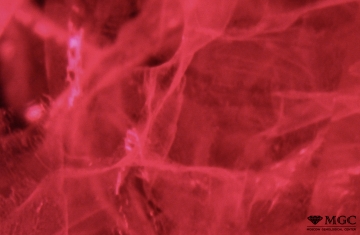


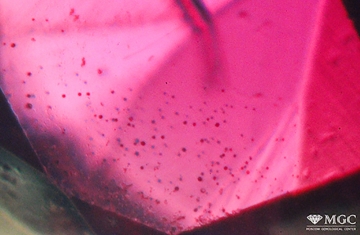
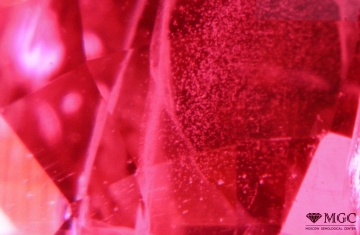
Ruby Quality Factors
Most gemological characteristics of ruby are based on single values for each of the criteria as follows:
- The carat weight measures the mass of a ruby. The mass of ruby in jewelry can be defined by the calculation method;
- The color is graded according to the approved standards for a faceted ruby or the color samples of the International Lighting Commission (MCO). The color of ruby for the purposes of gemological evaluation is ranging from orange-red to red with a strong purple hue;
- Clarity (in accordance with the approved ruby clarity factors) is visible with the unaided eye viewed under 10x magnification;
- Cut (taking into account the crystal shape) is defined in a complex way based on estimation of proportions, symmetry and polishing. The internal reflection range (IRR) parameter is used as an additional factor in the estimation of ruby cut.
Additional quality factors are as follows:
- Selection - the matching of the stones to each other in the jewel. It is important for several or a lot of large stones;
- Optical phenomena - the asterism and the "cat's eye" effect in rubies. The intensity and perfection is defined if available;
- Patterned textural effects - "trapeze" pattern in rubies. In case of its presence decorative qualities are defined;
- The availability of reliable information about the region of stone mining. Actual for stones from Burma (Mogok region), Tanzania, USA (Montana State).


